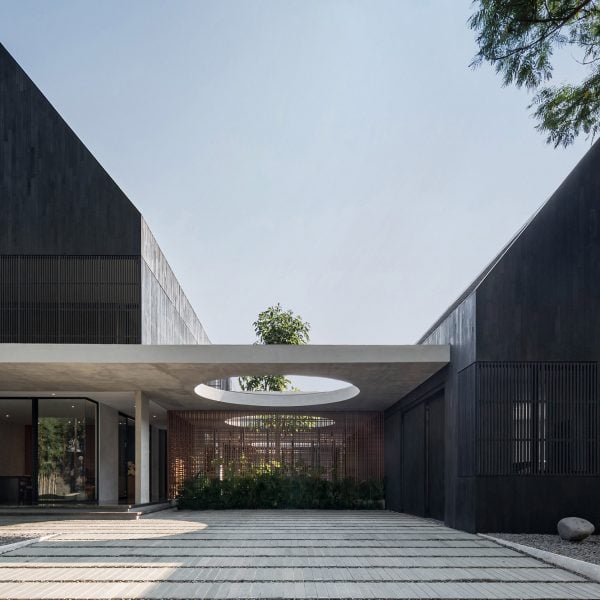Named Halo House, the dwelling comprises two gabled, barn-like forms clad in charred wood flanking a central strip of internal and external spaces that sit beneath a flat concrete roof.
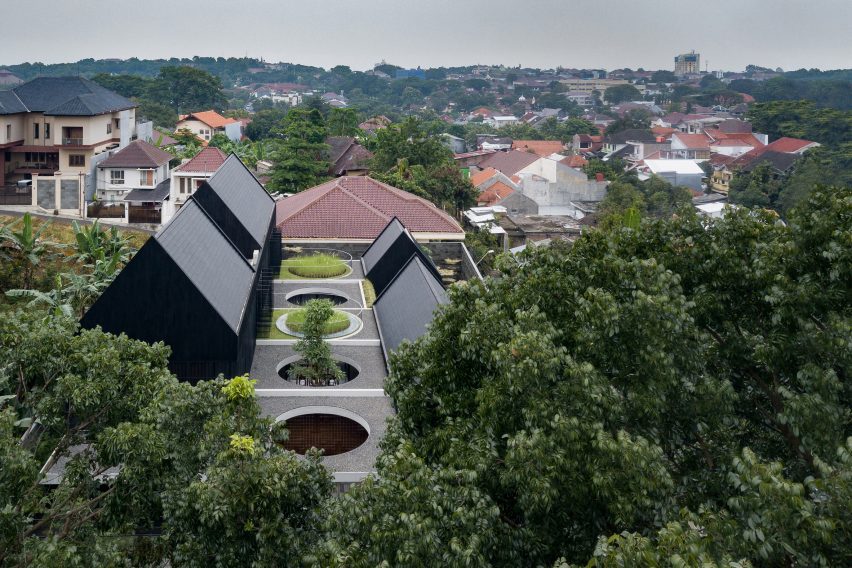
A series of circular cut-outs define this central roof. Above the external spaces, large voids open to the elements have been created, forming a canopy for the areas below.
Inside, above the living room and bedroom, only the edges of these circles have been left open to create halo-like skylights.
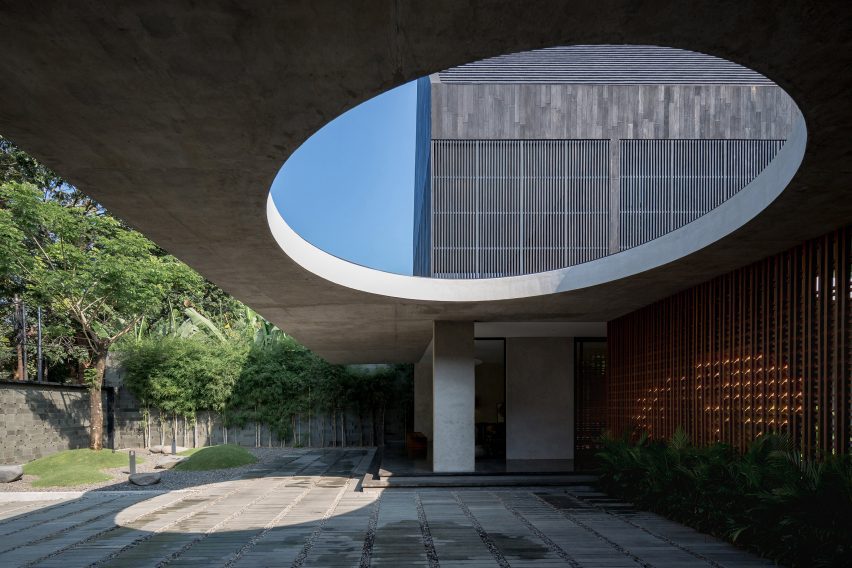
“These circular voids – or as we call it “halos” – give a strong characteristic to the architecture and spatial experience in the house,” explained the studio.
“The halo allows light to penetrate in an interesting form into the house throughout the days and gives shape to the falling rainwater.”
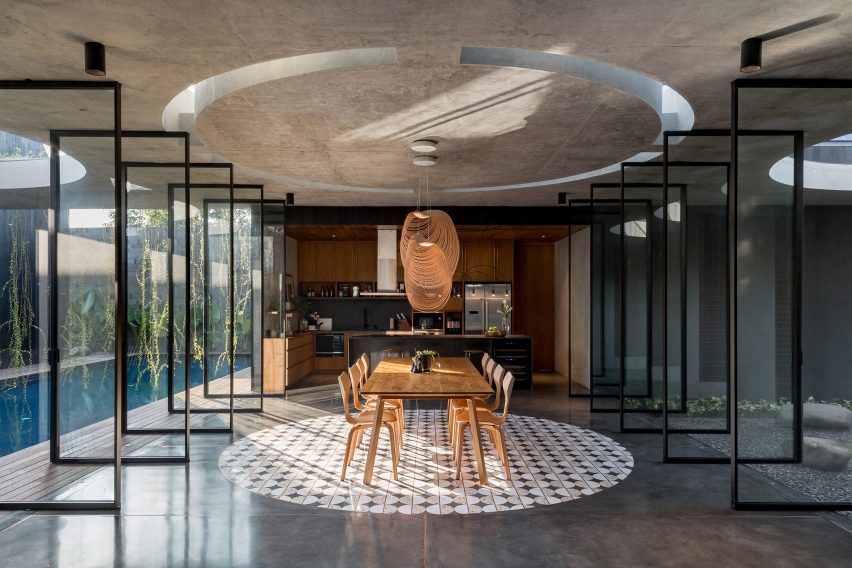
At the front of the site, a large paved driveway leads onto a carport between a garage in the single-storey eastern wing and a fully glazed office space in the two-storey wing opposite.
The entrance into the home is tucked between this glazed office and a latticed wooden screen, which gives glimpses of the home’s central courtyard while shielding its more private spaces from view.
At the heart of the home is a large dining area, which is lined by full-height, pivoting glass doors to the north and south that open onto courtyards and a swimming pool, providing ventilation through the home and a visual layering of spaces.
“The house is arranged in a way that it creates multiple layers of indoors and outdoors so each room has access to air and light on two sides of the room,” said the studio.
“One will experience the swimming pool being in between indoor and outdoor space, as the haloed concrete canopy shelters half of it while the rest is completely open.”
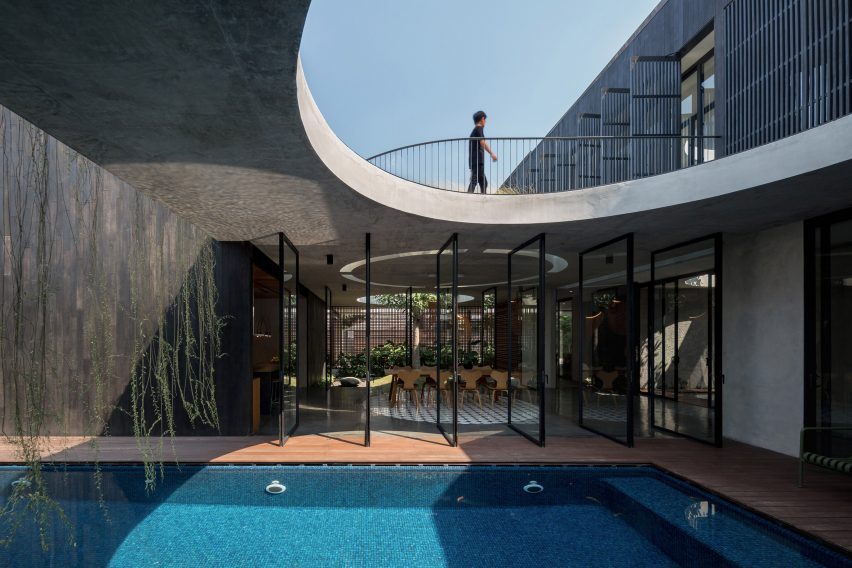
Alongside the central dining space is a more intimate living area and guest bedroom, while the main bedroom is afforded the most privacy at the end of the site, where it sits alongside the rear garden.
A staircase in the living area leads up to the second storey of Halo House’s western volume, where the children’s bedrooms sit shielded by an external cladding of narrow wooden slats.
This second storey opens out onto the central concrete roof, where the enclosed “halos” have been topped with small, circular areas of wild grass.
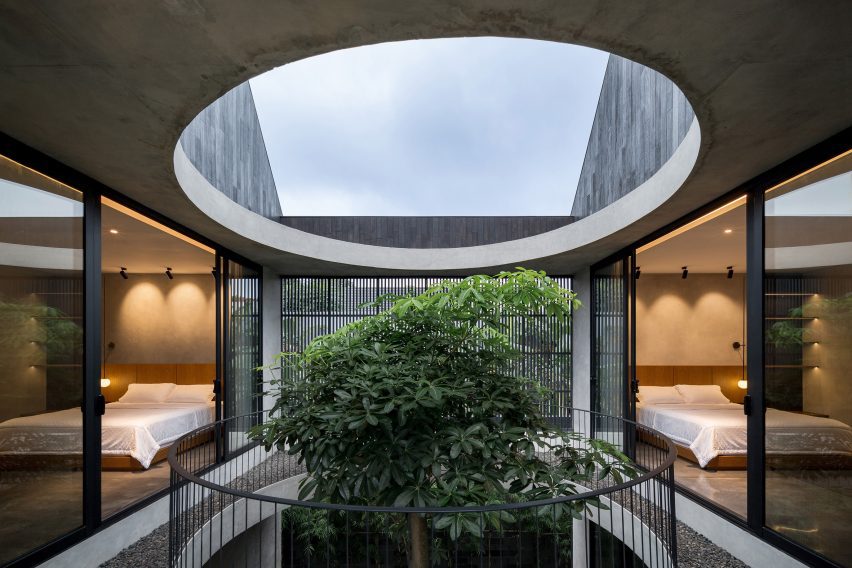
The eastern block houses the home’s service areas, including a wet kitchen and a separate bathroom that is directly accessible from the pool.
Tamara Wibowo founded her eponymous practice in 2015. Previous projects by the studio include a home for Wibowo’s own family, also in Semarang, which can be opened to the elements using pivoting glass doors.
The photography is by Andreaswidi.
Project credits:
Architect: Tamara Wibowo Architects
Principal architect: Tamara Wibowo
Project architect: Adi Iman Wicaksono
Project designer: Rieza Amalia
General contractor: RAH Contractor
Interior contractor: Ideaform
Electrical subcontractor: Kencana Elektrindo
Lighting solution: H+Works
Pool contractor: Bluepool
Plumbing subcontractor: Rejo Makmur
Steel subcontractor: Metalindo
Airconditioning: Arviatech
Wood contractor: Handpicked by Hend
Aluminium door and window systems: Astral Aluminium and MiLL Aluminium
Concrete flooring: Radja Finishing
Gypsum ceiling: Gypsum Classic
Terazzo flooring: Reflecto
Porcelain tile: Phillip Lakeman
Granite tile: Wisma Sehati and Venustiles
Marble: Stone Gallery
Wood parquette and ceiling: Teka Parquet
Window covering: Prima Jaya Interior
Sanitary fixtures: Kohler, Toto, Hansgrohe
Furniture: Forme Furniture, Fritz Hansen, Knoll, Hay Design, Ethnicraft, Santai Furniture
Lighting: Louis Poulsen, &Tradition, Luceplan, Tom Dixon

